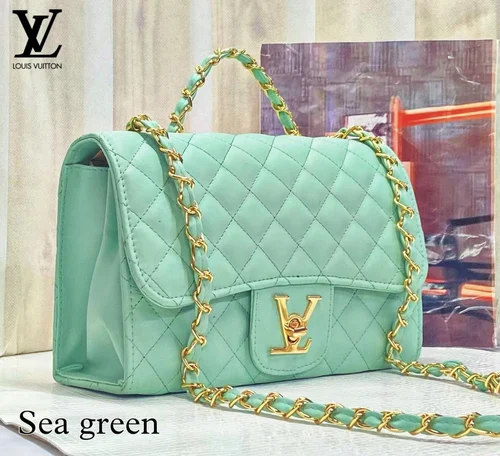Handbags have come a long way from their humble beginnings as purely practical items to become iconic symbols of fashion and personal expression. The journey of the handbag—from its utilitarian roots to its current status as a key accessory in the fashion world—reflects broader changes in society, culture, and style. This article explores the fascinating evolution of handbags, highlighting how they transitioned from functional objects to coveted fashion statements.
#### **1. Historical Origins: Practical Beginnings**
The history of handbags dates back to ancient civilizations, where they served primarily practical purposes. Early examples include:
– **Ancient Egypt**: Evidence of small pouches or bags worn around the waist or attached to clothing, used for carrying personal items and valuables.
– **Medieval Europe**: Pouches, often made of leather or fabric, were commonly used by both men and women to carry essentials. These were often worn on belts or attached to clothing.
During these early periods, handbags were primarily functional, designed to carry necessary items rather than to make a fashion statement.
#### **2. The 19th Century: The Birth of Modern Handbags**
The concept of the handbag began to take shape in the 19th century with the development of fashion and the need for more stylish accessories. Key developments during this period include:
– **The Reticule**: Also known as a “purse,” the reticule emerged in the early 19th century. These small, drawstring bags were often decorated with intricate designs and used by women to carry personal items like handkerchiefs, coins, and cosmetics. They marked the beginning of handbags as fashion accessories rather than mere utilitarian objects.
– **Leather Handbags**: In the late 19th century, the introduction of leather as a material for handbags allowed for more durable and stylish designs. This period saw the emergence of more structured and elegant designs, laying the groundwork for future innovations.
#### **3. The Early 20th Century: Luxury and Innovation**
The early 20th century marked a significant turning point in the evolution of handbags. The focus shifted from purely functional items to symbols of luxury and style.
– **Chanel and the Classic Flap Bag**: In 1929, Coco Chanel introduced the iconic Chanel Flap Bag, a design that revolutionized the handbag industry. With its quilted leather and chain strap, the bag combined luxury with practicality, becoming a timeless fashion statement.
– **Louis Vuitton and Monogram Canvas**: Louis Vuitton’s introduction of the monogram canvas in the early 20th century established the brand’s handbags as symbols of prestige and sophistication. The combination of durable materials and recognizable branding set a new standard for luxury handbags.
#### **4. The Late 20th Century: From Functional to Fashion-Forward**
The late 20th century saw the handbag evolve into a fashion accessory with diverse styles and functions, reflecting changing trends and consumer desires.
– **The Rise of Designer Handbags**: The 1980s and 1990s witnessed a boom in designer handbags, with brands like Prada, Gucci, and Hermès gaining prominence. Handbags became not just accessories but status symbols, with limited-edition designs and high prices driving demand.
– **Innovative Designs**: Designers began experimenting with new materials, shapes, and functionalities. The 1990s saw the introduction of the “It” bag, with iconic designs like the Fendi Baguette and the Marc Jacobs Stam Bag becoming cultural phenomena.
#### **5. The 21st Century: Personalization and Sustainability**
In the 21st century, the handbag has continued to evolve, reflecting contemporary values and trends.
– **Personalization**: Modern consumers seek personalized and unique handbags. Brands now offer customization options, allowing customers to choose colors, materials, and even add initials. This trend emphasizes individuality and self-expression.
– **Sustainability**: There is a growing focus on sustainable and ethical fashion. Brands are incorporating eco-friendly materials and practices into their handbag designs, responding to increased consumer awareness about environmental impact. Vegan leather and recycled materials are becoming popular choices.
– **Tech Integration**: The latest innovation involves integrating technology into handbags. Smart handbags with built-in charging ports, LED lights, and even GPS tracking are emerging, blending fashion with functionality in new ways.
#### **Conclusion**
The evolution of handbags from utilitarian objects to fashion statements illustrates broader changes in style, luxury, and consumer values. From ancient pouches to modern designer pieces, handbags have transformed into essential fashion accessories that reflect personal style and societal trends. As technology and sustainability continue to shape the industry, the handbag will undoubtedly adapt, continuing its journey as a symbol of both functionality and fashion.




